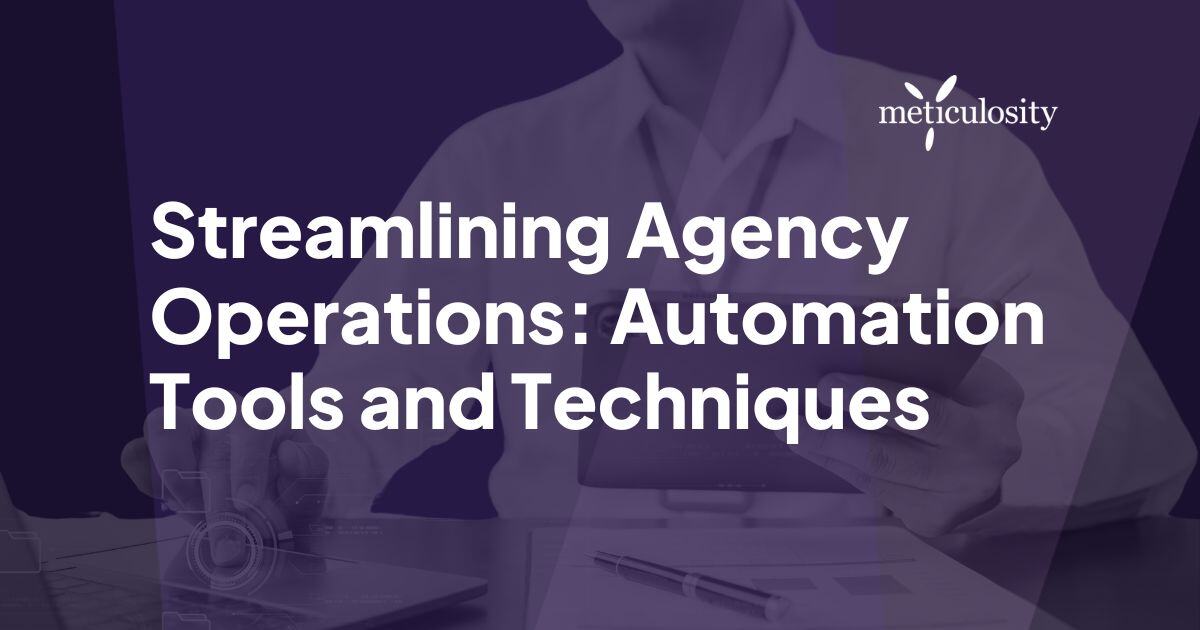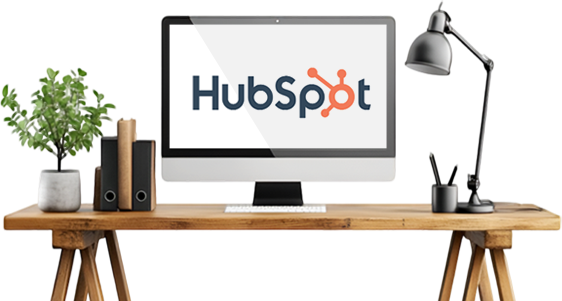Running a successful agency requires juggling multiple moving parts—from project management and client communication to marketing and financial tracking. As agencies grow, inefficiencies can creep in, leading to wasted time and resources. That’s where automation comes in.
By leveraging automation tools and techniques, agencies can streamline workflows, reduce manual tasks, and boost overall efficiency. In this guide, we’ll explore the best automation tools and strategies to help agencies operate more smoothly. If you're ready to transform your agency’s operations, check out Meticulosity's automation solutions to get started.
Identifying Automation Opportunities in Your Agency
Before diving into automation, it’s essential to identify where it can have the most impact. Many agencies struggle with inefficiencies in key operational areas, such as project management, client communication, and marketing execution. Understanding these bottlenecks is the first step to streamlining processes.
Project Management
Managing multiple client projects and internal workflows can become overwhelming without a structured system. Automating project management ensures better task delegation, progress tracking, and deadline adherence. Tools like Trello, Asana, and Monday.com allow agencies to create automated workflows that keep teams on track without excessive manual oversight. This guide from AgencyAnalytics provides insights on selecting the best project management tools for agencies.

Client Communication
Maintaining strong relationships with clients requires timely updates and follow-ups. Automation can help agencies send regular reports, email notifications, and meeting reminders without the need for manual intervention. By using CRM tools like HubSpot and Salesforce, agencies can streamline communication, ensuring no client inquiries fall through the cracks.
Marketing Campaigns
Marketing efforts require consistency to be effective. Automating email campaigns, social media scheduling, and lead nurturing can significantly reduce time spent on manual tasks while improving efficiency. Platforms like HubSpot, ActiveCampaign, and Marketo help agencies personalize marketing automation to reach the right audience at the right time. This article from SmartBug Media explores how marketing automation can drive better engagement and conversions.
Financial Management
Billing and invoicing can be tedious and prone to errors. By automating financial tasks with QuickBooks, Xero, or FreshBooks, agencies can ensure invoices are sent on time, expenses are tracked accurately, and payments are processed efficiently.
Reporting and Analytics
Data-driven decision-making is critical for agencies, but manually compiling reports can be time-consuming. Automating data collection and visualization with tools like Google Data Studio or HubSpot’s reporting features ensures real-time insights are readily available without manual input.
Essential Automation Tools for Agencies
To streamline operations, agencies can use various automation tools tailored to different functions.
Project Management & Workflow Automation
Tools such as Trello, Asana, Monday.com, and ClickUp help agencies manage tasks, deadlines, and team collaboration efficiently. They allow agencies to set up automated task assignments, notifications, and workflow progress tracking to ensure projects stay on schedule.
Client Relationship Management (CRM) & Sales Automation
CRM tools like HubSpot, Salesforce, and Pipedrive help agencies automate lead nurturing, follow-up emails, and sales pipeline management. Scheduling tools like Calendly and Chili Piper eliminate the back-and-forth emails by automating appointment bookings and confirmations.
Marketing Automation
Marketing automation platforms such as HubSpot, ActiveCampaign, and Marketo allow agencies to create email sequences, schedule social media posts, and segment audiences for personalized marketing campaigns. Social media scheduling tools like Hootsuite and Buffer further simplify content distribution.
Financial & Invoicing Automation
Managing invoices and payments can be simplified with automation tools like QuickBooks, Xero, and FreshBooks. These platforms offer automated invoicing, payment reminders, and financial tracking to help agencies maintain cash flow and reduce administrative work.
AI-Powered Content & Design Tools
Content creation and design tasks can be time-intensive. AI-powered tools like ChatGPT and Jasper assist with generating blog content and email copy, while Canva and Adobe Sensei help streamline graphic design tasks with AI-assisted features.
Techniques for Implementing Automation Successfully
Adopting automation doesn’t mean replacing human effort but optimizing it. Follow these steps for a smooth transition:
Map Out Your Current Workflows
Identify all the repetitive tasks within your agency and document the processes involved. Understanding how tasks are currently performed will make it easier to determine which aspects can be automated.
Prioritize Based on Impact
Not all automation efforts yield the same results. Start by automating high-value areas like CRM, project management, and marketing before moving to smaller tasks.
Train Your Team
Introducing automation tools without proper training can lead to confusion and inefficiencies. Ensure your team understands how to use the new tools effectively and how they fit into their daily workflows.
Integrate Your Tools
Many automation platforms work best when they are connected. Choose tools that integrate well with each other to ensure smooth data transfer and cohesive workflows.
Monitor and Optimize
Automation is not a one-time implementation; it requires ongoing monitoring. Regularly review your automation processes to identify areas for improvement and adjust settings as needed.
Avoiding Common Automation Pitfalls
While automation can be a game-changer, it’s important to avoid these common mistakes:
Over-Automation
Too much automation can make interactions feel robotic. Ensure you maintain a balance between efficiency and personalization, especially in client communications.
Lack of Integration
Using tools that don’t sync well with existing systems can create workflow gaps. Choose automation solutions with strong integration capabilities.
Ignoring Regular Updates
Automation requires ongoing optimization to ensure continued effectiveness. Regularly evaluate processes to keep them aligned with your agency’s evolving needs.
The Future of Automation in Agencies
Automation is continuously evolving, with AI-driven solutions leading the way.
AI-Powered Chatbots and Virtual Assistants
Agencies are increasingly using AI-driven chatbots to handle client inquiries and improve response times.

Predictive Analytics
Using AI to forecast client needs and optimize strategies can give agencies a competitive edge.
Deeper Automation Integrations
Future automation trends will see stronger connections between CRM, marketing, sales, and operations tools for seamless functionality.
Conclusion
Automation is no longer a luxury for agencies—it’s a necessity for scaling operations efficiently. By implementing the right tools and strategies, agencies can reduce manual tasks, improve productivity, and enhance client satisfaction. Whether you’re just starting or looking to refine your existing automation strategy, taking a structured approach will yield the best results.
Ready to streamline your agency’s operations? Explore Meticulosity's automation solutions and take the next step toward efficiency and growth today!
Frequently Asked Questions
1. What Are the First Steps in Automating Agency Operations?
Start by identifying repetitive tasks, selecting automation tools, and implementing small, high-impact changes.
2. How Can Automation Improve Client Relationships Instead of Making Them Feel Impersonal?
Use automation to enhance efficiency (e.g., reminders, reporting) while maintaining personalized communication.
3. How Do I Ensure Automation Tools Integrate Well with My Existing Systems?
Choose tools with strong integration capabilities and API support to ensure seamless data flow.
4. Will Automation Replace Agency Jobs?
No—automation enhances productivity by handling repetitive tasks, allowing teams to focus on strategy and creativity.
5. What’s the Best Way to Measure the Success of Automation?
Track efficiency improvements, time savings, reduced errors, and client satisfaction metrics.







